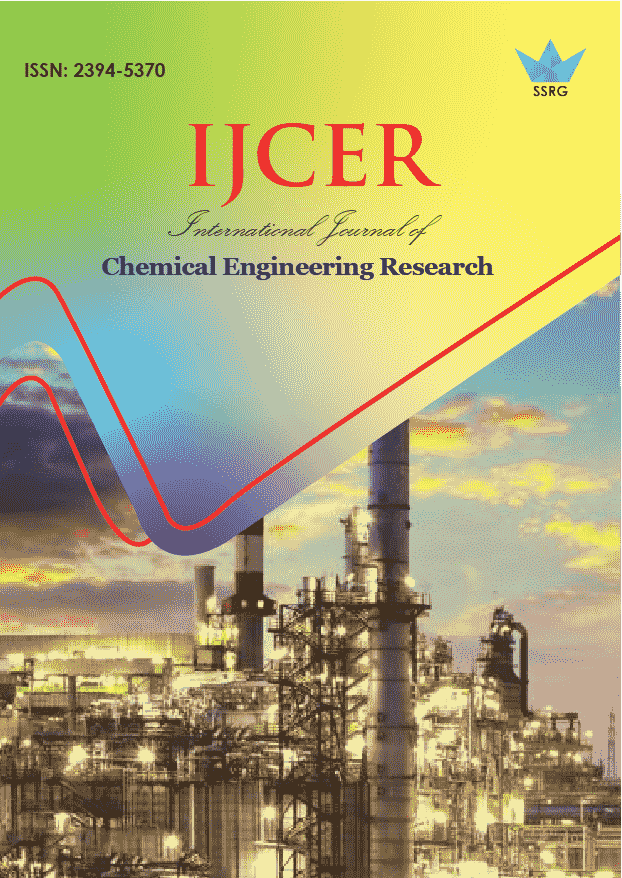Eco Friendly Brick Produced by the Reaction of Bacteria

| International Journal of Chemical Engineering Research |
| © 2014 by SSRG - IJCER Journal |
| Volume 1 Issue 1 |
| Year of Publication : 2014 |
| Authors : D.Karunagaran |
How to Cite?
D.Karunagaran, "Eco Friendly Brick Produced by the Reaction of Bacteria," SSRG International Journal of Chemical Engineering Research, vol. 1, no. 1, pp. 1-3, 2014. Crossref, https://doi.org/10.14445/23945370/IJCER-V1I1P101
Abstract:
This paper discuss about the preparation of soil bricks using the bacteria which will give effective way to settle down in the natural phenomena. The bacteria that is used for the concrete repair to eradicate the plugging of pores and to avoid the cracks in the concrete. In this process it uses the microbial mineral precipitation to manufacture the bricks which will improve the behavioural pattern of the concrete. Also it will discuss about the chemical process takes place in the concrete. In this it will produce the adverse effect of the enviroment friendly bricks.
Keywords:
chemical process, bacteria, MICP
References:
[1] K. D. Arunachalam, K. S. Sathyanarayanan, B. S. Darshan, and R. B. Raja, “Studies on the Characterization of Bio sealant properties of Bacillus sphaericus,” International Journal of Engineering Science and Technology, vol.2, no.3, 2010, pp. 270–277.
[2] Annie Peter.J, Lakshmanan.N, Devadas Manoharan.P, Rajamane.N.P & Gopalakrishnan. S ―Flexural Behaviour of RC Beams Using Self Compacting Concrete‖. The Indian Concrete Journal, June 2004, PP 66- 72.
[3] Benini S, Rypniewski W, Wilson KS, Miletti S, Ciurli S, Mangani S., “A new proposal for urease mechanism based on the crystal structures of the native and inhibited enzyme from Bacillus pasteurii: why urea hydrolysis costs two nickels.” Structure7, 1999, pp.205-216.
[4] Ghosh P, Mandal S, Chattopadhyay BD, Pal S., “Use of microorganism to improve the strength of cement mortar.” Cement and Concrete Research 35, 2005, pp.1980-1983.
[5] P. Tiano, L. Biagiotti, G. Mastromei, “Bacterial biomediated calcite precipitation for monumental stones conservation: methods of evaluation”, Journal of Microbiological Methods, Vol.36, Issues 1–2,1999, pp.139 145.
[6] [6] Seshagiri Rao M.V., Ch Sasikala V. and Srinivasa Reddy, “A Biological Approach To Enhance Strength And Durability In Concrete” Structures, International Journal of Advances in Engineering and Technology (IJAET), Sept 2012 4(2), 392 -399 (2012).
[7] V. Ramakrishnan, R. K. Panchalan, S. S. Bang, and R.City, “Improvement of Concrete Durability By Bacterial Mineral Precipitation,” International Conference on Fracture, 2005.
[8] N. Chahal, R. Siddique, and A. Rajor, “Influence of bacteria on the compressive strength, water absorption and rapid chloride permeability of fly ash concrete,”Construction and Building Materials, vol.28, no.1, 2012, pp.351-356.
[9] N. De Belie and W. De Muynck, “Crack repair in concrete using bio deposition,” Concrete Repair, Rehabilitation and Retrofitting II, 2009, pp.777–782.
[10] Muynck W, Dick J, De Graef B, De Windt W, Verstraete W, De Belie N., “Microbial ureolytic calcium carbonate precipitation for remediation of concrete surfaces.” Proceedings of International conference on concrete repair, rehabilitation and retrofitting, South Africa, Cape Town, 2005, pp. 296-297.
[11] Tai C.Y. and Chen F.B., Polymorphism of CaCO3 precipitated in a constant composition environment. AIChE Journal , 44(8), 1790 - 1798 (1998).
[12] Ciurli S, Marzadori C, Benini S, Deiana S, GessaC., “Urease from the soil bacterium: Bacillus pasteurii immobilization on Ca polygalacturonate.” Soil Biol Bio chem 28, 1996, pp. 811-817.

 10.14445/23945370/IJCER-V1I1P101
10.14445/23945370/IJCER-V1I1P101